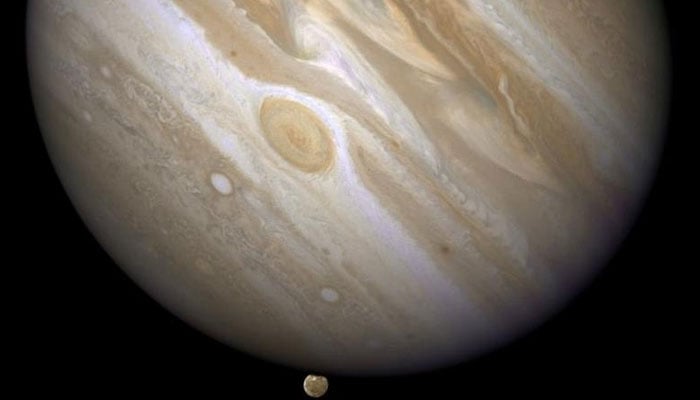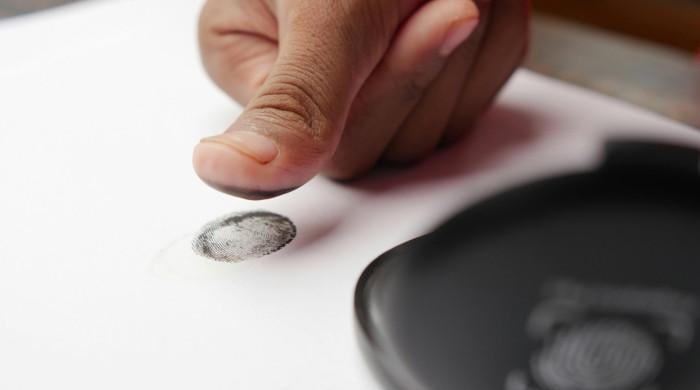ESA's Jupiter moons mission 'Juice' all set for second take-off
Jupiter is very cold and very far in the solar system, only receiving one twenty-fifth of the light falling on Earth
April 14, 2023

After Thursday's failed bid to launch its mission to space, the European Space Agency (ESA) said that it make another attempt on Friday to launch its Jupiter Icy Moons Explorer — dubbed Juice.
Due to the lightning over the Kourou Spaceport French Guiana, the launch could not take place on Thursday.
The Juice is being sent to Jupiter to observe and carry out a study on its moons — Callisto, Ganymede and Europa. The moons are thought to have large water reserves. Moreover, scientists are also finding clues whether they could host life.
Jupiter is very cold and very far in the solar system, receiving one twenty-fifth of the light falling on Earth.
However, the gravitational squeezing which Jupiter exerts on its three moons could allow scientists to infer that they potentially have the energy and warmth to drive simple ecosystems — much like the ones that exist around volcanic vents on Earth's ocean floors.
Mission scientist Professor Emma Bunce from Leicester University, UK told BBC: "In the case of Europa, it's thought there's a deep ocean, maybe 100km deep, underneath its ice crust."
"That depth of the ocean is 10 times that of the deepest ocean on Earth, and the ocean is in contact, we think, with a rocky floor. So that provides a scenario where there is mixing and some interesting chemistry," the professor said.
The mission is scheduled to lift off at 09:14 local time in Kourou (13:14 BST). The Juice weighs six-tonne.
With an instantaneous launch window, the Ariane rocket will take the mission skyward and when computers demand, it must be off the ground.
The rocket Ariane will not send the spacecraft to the moons of Jupiter. But it will send the spacecraft on to a path around the inner Solar System.
The mission will be gravitationally thrown outside to its destination after a series of fly-bys of Venus and Earth. The journey is 6.6bn km which would last 8.5 years. The arrival of the Jovian system is expected in July 2031.
The mission will study the moons from afar without landing on their surface. Juice’s ultimate target is Ganymede — the solar system’s largest moon.
Its tour would conclude in 2034 by entering the Earth's orbit.
The moons will be used via radars and the 3D maps of their surfaces will be created with lidar laser measurement. Moreover, magnetometers will explore their intricate electrical and magnetic environments; and other sensors will collect data on the whirling particles that surround the moons.
The task of Juice is to collect information about habitability so that other missions could further their search on the matter.
Scientists are already pondering over modes to land on a frozen moon and drill its crust to the water beneath it.
In Antarctica, heat is used by researchers to bore hundreds of metres through the ice sheet to deploy submersibles in places where the local ocean is frozen over.
It would be challenging to work in a similar manner thereon a Jovian moon where the ice crust might be tens of kilometres thick.
Nasa is also sending its satellite Clipper alongside Juice. Clipper will reach before Juice despite its launch in 2024. Nasa's satellite is powered by a much more powerful rocket focusing on Europa.
Prof Carole Mundell, the director of science at the ESA told BBC "There is great complementarity and the teams are very keen to collaborate", adding that "Certainly, there's going to be a wealth of data. But, first, we've got to make sure our missions get to Jupiter and are operating safely."









